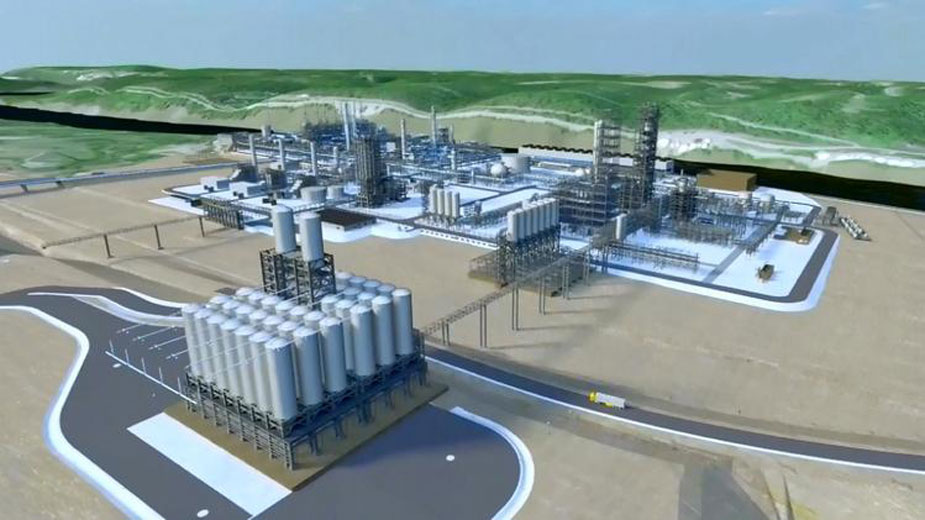Shell Exec Touts Cracker’s Competitive Advantages
PITTSBURGH – Why Pennsylvania? That’s the question Ate Visser says he’s asked frequently after Royal Dutch Shell decided to move forward on a $4 billion investment to construct a large ethane “cracker” plant in the heart of the Ohio River Valley.
“The answer is very simple: We are sitting here on a world-class resource base at the doorstep of the customer,” Visser, vice president of Shell Chemical LP’s Appalachia Petrochemicals, said Tuesday during a panel discussion with energy and petrochemicals executives. “This will give us a long-term, sustainable competitive advantage.”
Visser was among a host of speakers at the Northeast U.S. and Canada Petrochemical Construction Conference and Exhibition at the downtown Marriot, hosted by Petrochemicals Update. It is the first time a top-level Shell executive has spoken publicly about the project since Shell announced its decision to move ahead with the project earlier this month.
On June 7, Shell announced its final investment decision to build an ethane cracker complex along the Ohio River near Monaca, Pa. The plant would convert liquid ethane gas produced from the Utica shale in eastern Ohio and the Marcellus shale in western Pennsylvania into ethylene – a base ingredient in many plastics products.
“We will be using the lowest-cost shale gas resource in the United States,” Visser said. By processing the gas here, it reduces the cost of shipping the gas south to the Gulf Coast, where most of the ethylene and polyethylene are produced. Moreover, the proximity to markets in the Midwest and Northeast benefit customers and manufacturers who use the products because their transportation costs would also be reduced.

Shell is preparing 1,000 acres along the banks of the Ohio River near Monaca in Beaver County to support the cracker and an accompanying polyethylene production complex. About 400 workers are now on site, Visser said, and the number of tradesmen could peak at 6,000 once construction begins in earnest in 18 months.
The company plans to use that interval between now and the start of construction to complete its engineering, design work and site preparation, Visser said.
Another reason Shell selected the site in Pennsylvania is the strong local and state incentives that helped offset the cost of building the plant. “Without these fiscal incentives, we would not have taken this investment step,” Visser said.
Once the cracker is operational, it would employ about 600 full-time and potentially create hundreds of other jobs in related sectors. And, the hope among officials in the region is that Shell’s investment would trigger other interests to move forward with similar cracker projects in Ohio and West Virginia.
Shell’s cracker is expected to consume about 100,000 barrels of ethane per day. Pipelines would run from fractionation plants in the region directly to the cracker complex, he said.
Site preparation began more than a year ago at the former Horsehead Holding Corp. zinc smelting operation along the Ohio River, Visser said. Since Shell acquired the land, it has erased all traces of the former operation, constructed a haul bridge to move dirt from the site, and relocated CSX rail tracks and a portion of state Route 18. “This is a remarkable transformation,” he said. “We have literally moved a mountain.”
Thus far, the complex has 10 suppliers committed to the cracker, Visser said.
Among these suppliers is Denver-based Antero Resources, which has experienced strong results from its Utica wells in Noble and Monroe counties in Ohio.
“We are the largest anchor out there on the project,” said Steve Woodward, Antero senior vice president. “We’re very happy that Shell has stepped forward and made this opportunity for the basin. We always feel that the best thing you can do with your production is to have your demand right here at home.”
Shell has said that the cracker would be fully operational in the early 2020s.
“This project symbolizes Shell’s strengths,” Visser said, combining the knowledge of the region’s resource base, engineering and design, chemicals and its strategy to execute capital projects. “All these factors together are essential. I think we made the right decision.”
Copyright 2024 The Business Journal, Youngstown, Ohio.


